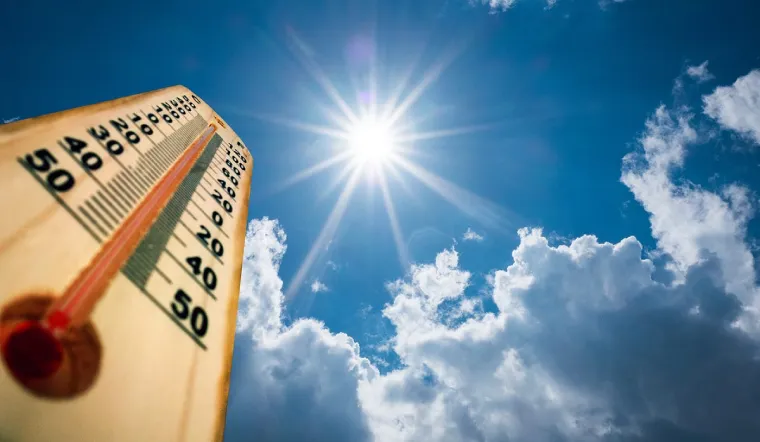Introduction
Imagine waking up to find your city sweltering under an oppressive blanket of heat, where even the air feels like it’s been simmering on a stove. This isn’t the start of a science fiction novel; it’s the reality of a heat wave. Just last summer, the world watched as record-breaking temperatures soared across continents, leaving people and cities grappling with unprecedented heat. Heat waves aren’t just about discomfort; they seriously affect health, the environment, and even the economy. In this article, we’ll explore the ins and outs of heat waves, including statistics, effects, and future projections, with a touch of storytelling and expert insights.
What is a Heat Wave?
Definition and Criteria
A heat wave is a prolonged period of scorching weather, which may be accompanied by high humidity. The precise criteria can vary depending on the region. For example, in the United States, a heat wave is often defined as three or more consecutive days with temperatures exceeding 90°F (32°C). However, these thresholds can differ in other parts of the world.
How Heat Waves Develop
Heat waves typically develop due to high-pressure systems that trap warm air in an area for extended periods. These systems prevent cooler air from moving in, causing temperatures to rise continuously. This phenomenon is further exacerbated in urban areas, where concrete and asphalt absorb and retain heat, creating what is known as the “urban heat island” effect.
The Science Behind Heat Waves
Atmospheric Conditions
The science behind heat waves involves complex atmospheric dynamics. High-pressure systems, also known as anticyclones, are central to the development of heat waves. These systems block cooler weather patterns and allow hot air to stagnate over a region, causing prolonged periods of heat.
Urban Heat Islands
Urban heat islands (UHIs) are localized areas within cities that experience higher temperatures than their rural surroundings. This effect occurs because cities often have more concrete, asphalt, and buildings that absorb and retain heat. The lack of vegetation in urban areas further compounds the problem, making heat waves in cities particularly intense.
Historical Heat Waves
Notable Heat Waves in History
Throughout history, there have been several notable heat waves that have left a significant mark. One such example is the 2003 European heat wave, which claimed thousands of lives and led to widespread agricultural damage. Another example is the 1936 North American heat wave, which was one of the most severe in U.S. history, affecting millions and causing numerous fatalities.
The Impact of Past Heat Waves
These historical events highlight the severe impacts of heat waves. They serve as a reminder of societies’ vulnerability to extreme weather conditions. The repercussions of such events include not only loss of life but also long-term economic and environmental damage.
Heat Wave Statistics
Global Statistics
Heat waves are becoming increasingly common around the globe. According to recent data, the number of heat wave days has doubled over the past few decades. The World Meteorological Organization reports that heat waves are now occurring more frequently and with greater intensity.
Regional Statistics
Regional statistics also paint a concerning picture. For instance, in the United States, heat waves have become more frequent in recent years, with July 2023 being one of the hottest months on record. Similarly, parts of Asia and Australia have experienced record-breaking temperatures, further emphasizing the global nature of this issue.
Effects of Heat Waves
Health Impacts
The health impacts of heat waves are severe and multifaceted. Prolonged exposure to high temperatures can lead to heat exhaustion, heat stroke, and even death. Vulnerable populations, such as the elderly and those with pre-existing health conditions, are particularly at risk.
Environmental Impacts
Heat waves also have significant environmental impacts. Prolonged high temperatures can lead to drought conditions, affecting water supply and agriculture. The increased heat can also stress ecosystems, leading to issues such as forest fires and loss of biodiversity.
Economic Consequences
The economic consequences of heat waves are considerable. They include increased healthcare costs due to heat-related illnesses, infrastructure damage, and productivity loss. For example, a severe heat wave can lead to decreased worker productivity and increased energy consumption for cooling.
Preparing for a Heat Wave
Staying Safe and Cool
Preparation is key to surviving a heat wave. Staying hydrated, wearing lightweight clothing, and avoiding strenuous activities during peak heat hours are essential steps. Additionally, using fans and air conditioning can help keep indoor temperatures safe.
Emergency Preparedness
Having an emergency plan is crucial. This includes knowing where to go if cooling centers are available and having a list of emergency contacts. For those with health conditions, keeping in touch with healthcare providers and having the necessary medications on hand is important.
Heat Wave Myths and Facts
Common Misconceptions
There are many misconceptions about heat waves. For instance, some believe that staying indoors is always safe. However, indoor environments can also become dangerously hot, especially without proper ventilation and cooling systems.
Debunking Heat Wave Myths
Debunking myths is essential for effective heat wave management. For example, the idea that drinking alcohol helps cool you down is false. In reality, alcohol can dehydrate you, increasing the risk of heat-related illnesses.
The Future of Heat Waves
Climate Change and Heat Waves
Climate change is a major factor in the increasing frequency and intensity of heat waves. As global temperatures rise, heat waves are expected to become more severe and more frequent. This highlights the urgent need for climate action and adaptation strategies.
Predictions for the Coming Years
Experts predict that heat waves will continue to grow in intensity. According to the Intergovernmental Panel on Climate Change (IPCC), we can expect more frequent and prolonged heat waves if current trends continue. This underscores the importance of preparing for and mitigating the effects of extreme heat.
Conclusion
Heat waves are a growing concern with far-reaching impacts on health, the environment, and the economy. By understanding the science behind heat waves, preparing adequately, and addressing myths, we can better manage and mitigate their effects. As we look to the future, it’s clear that adapting to and preparing for heat waves will be crucial in ensuring our safety and well-being.




